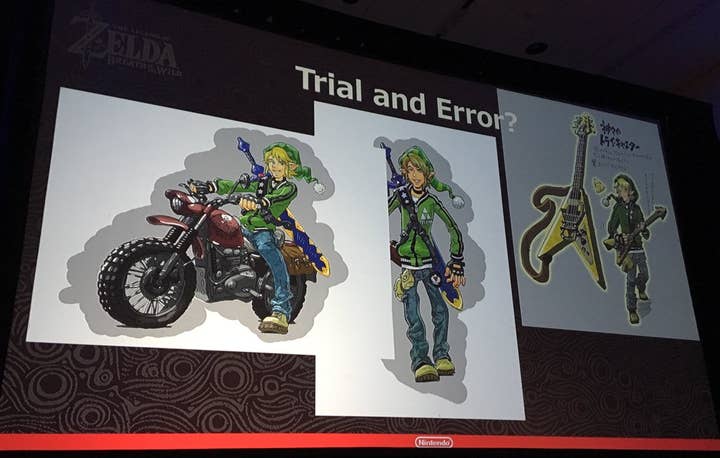The Legend of Zelda: Breath of the Wild was prototyped in 2D
Nintendo returned to the original game as it prepared to radically change the series
Nintendo returned to the essence of the very first Zelda game in its efforts to radically change the franchise.
In a talk at GDC 2017, Breath of the Wild producer Hidemaro Fujibayashi talked about the new game's change in direction - which sees a fully open world Zelda where players can overcome puzzles and obstacles in multiple ways, tackle dungeons in any order and even fight the final boss once they've passed the tutorial area.
"I thought about the original NES Zelda game," Fujibayashi said. "Didn't this new vision sound like the one from that game? To battle enemies while scrolling across a huge, expansive field? A game where the player can think what they want to do and experience excitement and adventure? The original Hyrule has all of the elements for this kind of adventure."
The Zelda development team provided Link with a series of tools and skills to help traverse the landscape in multiple ways, such as using the parachute to float upwards or over obstacles and a device to lift metal objects and freeze elements.
Fujibayashi then built the first prototype using the 2D Zelda graphics from the very first game, to ensure it remained true to the franchise and yet could still work and create that sense of adventure.

"We used this as a way to experiment with the mechanisms I was talking about earlier, so you could say this is a legitimate prototype of Breath of the Wild," he said.
Technical director Takuhiro Dohta then spoke of how these mechanics changed Zelda. He showed videos of players utilising the mechanics in unexpected ways, such as dropping metallic slabs on enemies. In one video, he showed Link charging a metal crate with energy, before climbing on top of it as it flew through the air and allowed him to reach the middle of a large lake. That wasn't the intention of the skill, but the fact players could use it that way - and feel clever about doing so in the process - is what the team was striving for.
The Zelda team had hoped this would also prevent gamers from going online to look up solutions on how to solve puzzles and obstacles.
"The player would try all kinds of things in the game that we had never envisioned," said Dohta.
"We even found that it is possible to roll a boulder all the way from the start point to the final boss."
The game's physics engine wasn't quite enough, however. The Zelda team combined that with a 'chemistry engine', which allows objects in the game to be affected by things such as fire, water and electricity. Although the physics make sense symbolically, they weren't especially realistic, hence the current Zelda art style.
Nintendo's Zelda team also experimented with some unusual Zelda art designs, including what looks like a rebellious teenage Link on a motorbike.









